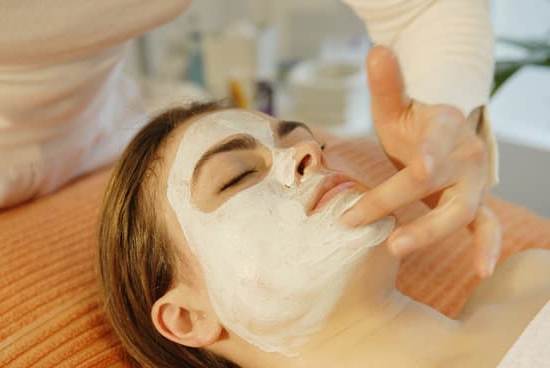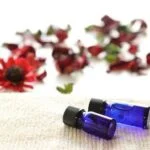Aromatherapy is a holistic healing practice that utilizes essential oils extracted from plants to promote physical, emotional, and mental well-being. From relaxation to pain relief, aromatherapy has been known for its numerous healing properties. One of the common queries often asked is “what aromatherapy is good for cuts?” Well, in this article, we will delve into the world of aromatherapy specifically for treating cuts and wounds.
Essential oils have been used for centuries for their antiseptic, antibacterial, and anti-inflammatory properties which make them ideal for treating minor injuries like cuts. Aromatherapy not only aids in promoting faster healing but also helps in reducing pain, swelling, and preventing infection in wounds. By harnessing the power of nature through essential oils, aromatherapy can be a natural and effective alternative to conventional wound care treatments.
Exploring the benefits of aromatherapy for cuts will provide insights into how certain essential oils can aid in wound healing and overall well-being. From lavender’s calming properties to tea tree oil’s antiseptic benefits, incorporating these natural remedies into your first aid kit can be both practical and beneficial. Understanding how to use essential oils safely and effectively is crucial in maximizing their potential healing power in treating cuts and minor injuries.
Understanding the Benefits of Aromatherapy for Cuts
Aromatherapy has been used for centuries as a natural healing practice that involves the use of essential oils extracted from plants to promote health and well-being. When it comes to cuts, aromatherapy can offer unique benefits due to the anti-inflammatory, antiseptic, and pain-relieving properties of certain essential oils. These natural remedies not only help in the physical healing process but also have calming effects on the mind and emotions.
Here are some key benefits of using aromatherapy for cuts:
- Anti-inflammatory properties: Essential oils such as lavender, tea tree, and chamomile have anti-inflammatory properties that can reduce swelling and redness around a cut or wound.
- Antiseptic properties: Tea tree oil is known for its powerful antiseptic properties, making it an effective choice for cleaning and disinfecting cuts to prevent infection.
- Pain relief: Peppermint oil and eucalyptus oil are popular choices for their analgesic properties which can help alleviate pain associated with cuts and minor injuries.
Utilizing aromatherapy for cuts not only promotes physical healing but also provides a holistic approach to overall well-being by supporting emotional balance. By understanding how different essential oils can aid in the healing process, individuals can effectively incorporate aromatherapy into their wound care routine.
When considering what aromatherapy is good for cuts, it’s important to choose high-quality essential oils from reputable sources to ensure effectiveness and safety. Additionally, it’s crucial to properly dilute essential oils with carrier oils before applying them to the skin to avoid any potential irritation or adverse reactions. By following proper guidelines and precautions, individuals can harness the full potential of aromatherapy in treating cuts and supporting natural healing processes.
Top Essential Oils for Treating Cuts and Wounds
Aromatherapy has been used for centuries as a natural remedy for various ailments, including cuts and wounds. Essential oils derived from plants are known for their healing properties and can be effectively used to promote skin regeneration, reduce inflammation, prevent infections, and relieve pain associated with cuts. When it comes to treating cuts with aromatherapy, certain essential oils stand out for their antiseptic, antibacterial, and soothing properties.
Here are some of the top essential oils that have been traditionally used for treating cuts and wounds:
- Lavender oil: Known for its calming and antibacterial properties, lavender oil can help speed up the healing process of minor cuts while reducing pain and inflammation.
- Tea tree oil: With powerful antimicrobial properties, tea tree oil is effective in preventing infections in cuts and promoting skin repair.
- Helichrysum oil: This essential oil is renowned for its wound-healing abilities due to its anti-inflammatory and cell-regenerating properties. It can also help minimize scarring.
When using essential oils for cuts, it is crucial to dilute them properly before applying them to the skin to avoid irritation or sensitization. It is recommended to mix a few drops of essential oil with a carrier oil such as coconut or sweet almond oil before gently applying it to the affected area using a clean cloth or cotton pad.
Additionally, it’s important to perform a patch test on a small area of skin before widespread application to ensure there are no adverse reactions.
Ultimately, integrating aromatherapy into your first aid kit can provide you with natural alternatives for treating minor injuries like cuts. By harnessing the healing power of essential oils like lavender, tea tree, and helichrysum, you can effectively support your body’s natural healing processes while enjoying the calming aromas that these oils offer.
How to Safely Use Essential Oils for Cuts
Aromatherapy is an alternative healing practice that involves using essential oils from plants to promote physical, emotional, and mental well-being. When it comes to treating cuts and wounds, certain essential oils can be especially beneficial due to their antiseptic, anti-inflammatory, and skin-regenerating properties. Understanding how to safely use these essential oils for cuts is crucial in harnessing their healing potential.
Precautions When Using Essential Oils for Cuts
Before applying any essential oil to a cut or wound, it is important to dilute it properly with a carrier oil like coconut oil or sweet almond oil. Essential oils are highly concentrated plant extracts and can cause irritation or sensitization if used undiluted. Conduct a patch test on a small area of skin before applying the diluted essential oil to ensure there is no adverse reaction.
Top Essential Oils for Treating Cuts
Several essential oils have been found to be effective in promoting wound healing and preventing infections. Tea tree oil is renowned for its antibacterial and antifungal properties, making it a popular choice for treating cuts. Lavender essential oil has both calming and skin-repairing properties, while frankincense oil can help reduce inflammation and promote tissue regeneration.
Application Methods for Essential Oils on Cuts
When using essential oils for cuts, you can apply them topically either directly on the affected area or by using a compress soaked in diluted essential oil solution. For smaller cuts, you can also add a few drops of the chosen essential oil to your bandage before dressing the wound. Remember to keep the area clean and dry during the healing process to prevent infection.
By following these guidelines on how to safely use essential oils for cuts and incorporating them into your wound care routine, you can harness the natural healing power of aromatherapy effectively. Whether you are dealing with minor injuries at home or looking to enhance your first aid kit, exploring the benefits of aromatherapy for cuts can provide both physical relief and emotional support during the healing process.
DIY Aromatherapy Recipes for Cuts and Minor Injuries
Aromatherapy can be a beneficial and natural way to treat cuts and minor injuries, providing both physical and emotional healing properties. One of the key benefits of using aromatherapy for cuts is its ability to promote faster healing and reduce the risk of infection. Essential oils used in aromatherapy have antimicrobial, anti-inflammatory, and analgesic properties that can aid in the healing process while also soothing pain and discomfort.
When creating DIY aromatherapy recipes for cuts and minor injuries, it’s essential to choose the right essential oils that are safe and effective for topical application. Tea tree oil is renowned for its antiseptic properties, making it an ideal choice for treating cuts to prevent infections.
Lavender essential oil is another popular option due to its calming and skin-regenerating properties, promoting faster wound healing. Frankincense essential oil is known for its ability to reduce inflammation and promote cell regeneration, making it a valuable addition to DIY recipes for cuts.
To create a simple yet effective DIY aromatherapy blend for cuts, you can mix 2-3 drops of tea tree oil with 1-2 drops of lavender oil diluted in a carrier oil such as coconut or jojoba oil. Gently apply this mixture to clean cuts or wounds using a cotton ball or swab.
This blend not only helps disinfect the cut but also provides a soothing effect on the skin. Remember always to perform a patch test before applying any new essential oils topically to ensure there are no adverse reactions.
| Essential Oil | Main Benefits |
|---|---|
| Tea Tree Oil | Antiseptic properties, prevents infections |
| Lavender Oil | Calming, promotes skin regeneration | Frankincense Oil | Reduces inflammation, promotes cell regeneration |
Incorporating Aromatherapy Into Your First Aid Kit
Aromatherapy can be a valuable addition to your first aid kit, providing natural and effective remedies for cuts and wounds. When used appropriately, essential oils can help promote healing, reduce inflammation, prevent infection, and soothe pain associated with minor injuries. Incorporating aromatherapy into your first aid kit can offer a holistic approach to wound care that complements conventional treatments.
Benefits of Including Aromatherapy in Your First Aid Kit
One of the key advantages of having aromatherapy supplies in your first aid kit is the accessibility to natural remedies that can be used immediately after sustaining a cut or wound. Essential oils like lavender, tea tree, and helichrysum have antimicrobial properties that can help cleanse the wound and prevent infection. Additionally, these oils have soothing and anti-inflammatory effects that can alleviate discomfort and promote faster healing.
Essential Oils to Include in Your First Aid Kit
When incorporating aromatherapy into your first aid kit, it is important to choose essential oils that are safe for topical application on cuts. Tea tree oil is a popular choice for its antiseptic properties, while lavender oil is known for its calming effect on the skin.
Helichrysum oil is recognized for its ability to promote tissue regeneration and reduce scarring. These essential oils can be diluted with a carrier oil like coconut or jojoba oil before applying them directly to the injured area.
Case Studies and Success Stories of Aromatherapy for Cuts
Aromatherapy has been utilized for centuries to aid in the healing process of various ailments, including cuts and wounds. Many individuals have shared their success stories and experiences with using essential oils to promote faster healing and reduce the risk of infections. These case studies serve as valuable insights into the efficacy of aromatherapy for cuts, shedding light on its potential benefits.
One such case study involves a young woman who accidentally cut her finger while cooking. Instead of reaching for traditional antiseptics, she opted to treat the wound with lavender essential oil. Within a few days of consistent application, she noticed a significant reduction in pain and inflammation, with the cut showing signs of healing much faster than expected. This firsthand account highlights the soothing and anti-inflammatory properties of lavender essential oil in wound care.
Another success story comes from a hiker who encountered a deep gash on his leg during an outdoor expedition. Lacking immediate access to medical supplies, he applied tea tree essential oil to the wound as a natural disinfectant. Surprisingly, not only did the tea tree oil prevent any signs of infection, but it also helped in promoting quicker healing of the gash. This experience exemplifies the antimicrobial and wound-healing properties that certain essential oils possess.
| Case Study | Experience |
|---|---|
| Youg Woman | Lavender oil reduced pain and inflammation |
| Hiker | Tea tree oil prevented infection and aided in faster healing |
These real-life accounts showcase how aromatherapy can be a beneficial addition to your first aid kit for managing cuts and minor injuries effectively. As more individuals turn to natural remedies for their health needs, exploring the use of essential oils in wound care continues to gain popularity. By learning from these case studies and success stories, you can gain insights into what aromatherapy is good for when it comes to cuts and wounds.
Expert Tips for Maximizing the Healing Power of Aromatherapy in Wound Care
Aromatherapy is a holistic healing practice that utilizes the therapeutic properties of essential oils to promote physical, emotional, and mental well-being. When it comes to cuts and wounds, aromatherapy can be a powerful tool in aiding the healing process. Essential oils are known for their antiseptic, anti-inflammatory, and antibacterial properties, making them effective in preventing infections and speeding up the healing of cuts.
One expert tip for maximizing the healing power of aromatherapy in wound care is to properly dilute essential oils before applying them directly to the skin. Essential oils are highly concentrated plant extracts and can cause irritation or allergic reactions if not diluted correctly. It is recommended to mix essential oils with a carrier oil such as coconut oil or almond oil before applying them topically to cuts or wounds.
Another crucial tip is to perform a patch test before using any essential oil on a cut or wound. This involves mixing a small amount of diluted essential oil and applying it to a small area of skin to check for any adverse reactions.
It is important to remember that each individual may react differently to certain essential oils, so it’s best to test before full application. This way, you can ensure that the essential oil will not cause further irritation or discomfort on the wound site.
Conclusion
Aromatherapy has long been recognized for its powerful healing properties, offering a natural and holistic approach to various health issues. When it comes to cuts and wounds, essential oils can play a significant role in promoting faster healing and preventing infections. By understanding the benefits of aromatherapy for cuts, individuals can harness the therapeutic power of these oils to effectively support their body’s natural healing process.
Essential oils like tea tree, lavender, and chamomile have been found to be particularly effective in treating cuts and wounds. Their antibacterial, anti-inflammatory, and skin-regenerating properties make them ideal choices for promoting healing and reducing the risk of infection. When used correctly and safely, these essential oils can help facilitate the healing process while also providing pain relief and soothing effects on the skin.
Incorporating aromatherapy into your first aid kit can provide you with a natural alternative to traditional wound care products. By creating DIY aromatherapy recipes for cuts and minor injuries, you can tailor the treatment to your specific needs and preferences.
Remember to always follow expert tips for maximizing the healing power of aromatherapy in wound care, such as diluting essential oils properly and avoiding sensitive areas. In conclusion, harnessing the healing power of aromatherapy for cuts can offer a gentle yet effective way to support your body’s natural healing abilities while promoting overall well-being.
Frequently Asked Questions
What Essential Oil Helps Cuts Heal?
Lavender essential oil is known for its soothing properties and can help cuts heal faster. Its antimicrobial and anti-inflammatory qualities can aid in preventing infection and reducing pain during the healing process.
Can You Put Essential Oils on a Cut?
It is generally not recommended to put undiluted essential oils directly on a cut as it may cause further irritation or sensitivity. However, when properly diluted with a carrier oil, certain essential oils like lavender or tea tree oil can be applied to cuts to promote healing.
What Essential Oils Are Good for Burns and Cuts?
Tea tree oil is a popular choice for treating burns and cuts due to its potent antiseptic properties, which can help prevent infection and promote healing. Other essential oils like chamomile, rosehip, or helichrysum are also good options for soothing burns and cuts while supporting skin regeneration.

Are you looking for a natural way to improve your health and wellbeing?
If so, aromatherapy may be the answer for you.





